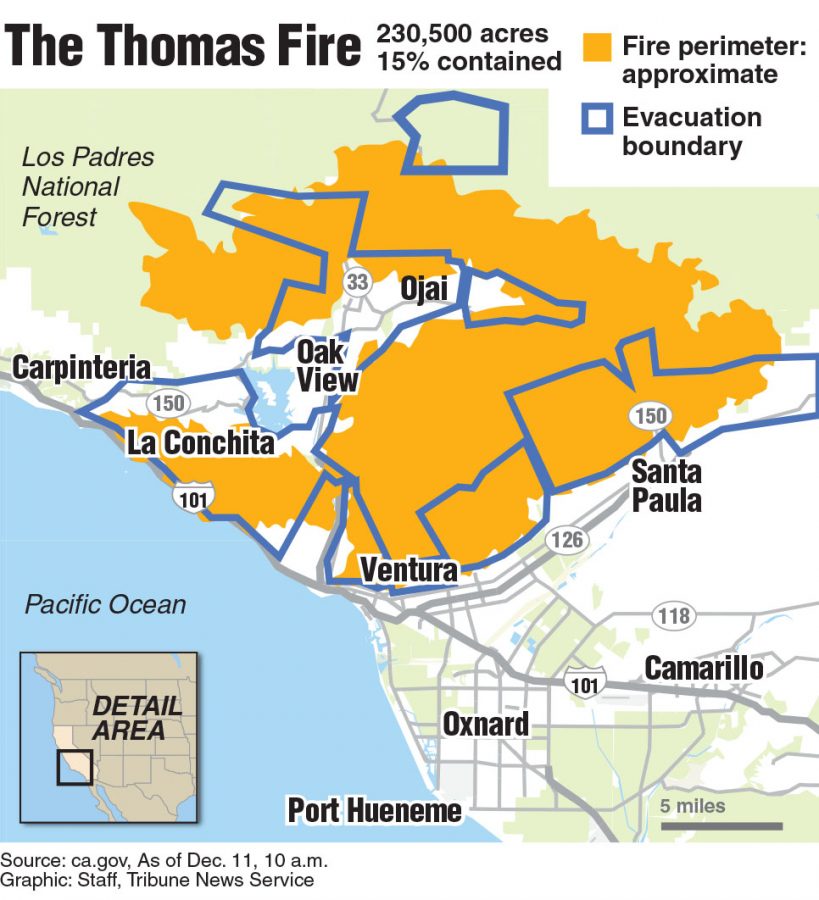This year was one of the most destructive fire seasons on record for California. Over 1,331,014 acres burned and as the end of the year gets closer, the Thomas Fire in Ventura and Santa Barbara Counties continues to burn with 30 percent of the 238,500 acre-fire contained. The multiple fires that spread over southern California’s coast from Santa Barbara to San Diego have slowly been extinguished but the Thomas Fire has not let up.
Although the fire continues to blaze nearing Christmas, on Dec. 13 Cal Fire tweeted that “the mandatory and voluntary evacuation orders and warnings have been lifted south of US-101 to the ocean, between the Santa Barbara/Ventura County line and SR-33.”
Last week fire departments all across southern California battled with Santa Ana winds which reached speeds of up to 70 mph. While the winds settled over the weekend, Fox San Diego reported another alert for strong winds nearing the end of the week. A precautionary alert would be “effective in San Diego-area inland valley and mountain locales from 4 a.m. Thursday to 10 a.m. Friday.”
On Dec. 7, news broke about the Lilac Fire in San Diego County which burned 4,100 acres. The fire which burned about 50 acres by 12:30 pm grew rapidly as wind speeds picked up throughout the day; by 10:00 pm the fire had grown rapidly, burning over 1,500 acres.
According to The Sacramento Bee, the destruction of the fires have reached a cost of $9 billion, making it one of the costliest fire seasons in history for California.
With the state’s notorious history of wildfires, it’s important residents take the appropriate steps to stay healthy during times where air quality may be extremely poor. Inhaling smoke and debris may cause respiratory issues which may not be detected immediately. Wearing the correct mask in the heavily-smoke polluted air is important; surgical masks are not enough. If possible, it’s recommended to use a proper respirator. Search for those labeled NIOSH Approved, N95, or N100.
Rinsing your mouth prior to drinking water can improve the chances of ridding your mouth of ash or grit. Toxins in the stomach area can cause extreme pain and can cause undetectable pain. Aside from rinsing your mouth, thoroughly washing fruits and vegetables prior to consumption can protect small traces of ash from entering the body system.
Other small tips include removing outerwear and shoes before entering homes. This can eliminate the chances of excessive ash, grit, and toxins from entering the home and settling into fabrics including bed sheets and couches. Vacuuming the areas in which you live is also highly recommended. HEPA-filtered machines are the most efficient for vacuuming all surfaces of your home to rid it of any ash particles.
The Mesa Press wishes everybody a safe winter break and keeps everyone affected by the fires in their thoughts.




